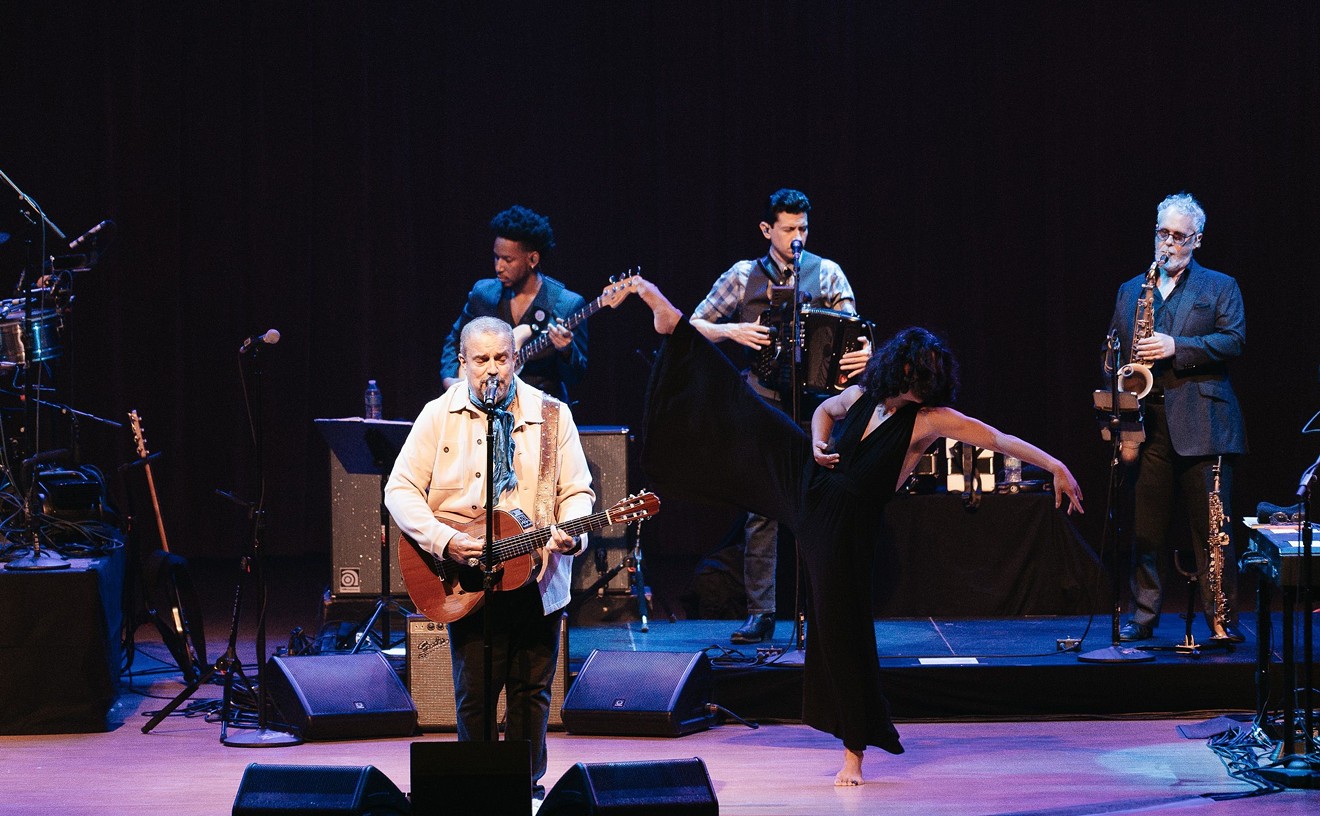My audience didn't care," veteran folk singer Tom Rush says laughing as he tries to explain why he didn't receive the same backlash for going electric with his sound in the 1960s the way Bob Dylan did.
"I don't know why that was," he admits, "but I think Dylan had this image of purity, which I have never been accused of! So when he went off in a different direction, people felt betrayed. My thing has always been to try different things, mix up different disciplines. People don't really have a firm idea of what to expect from me."
Indeed, Rush's career in its first ten years alone straddles the so-called folk revival of the '60s, most often represented by Dylan and Joan Baez, and the folk-rock movement that followed in the early '70s. Rush's 1968 album The Circle Game, which famously introduced the masses to the music of Joni Mitchell, James Taylor, and Jackson Browne, is even credited by Rolling Stone as having "ushered in the singer/songwriter era."
A native New Englander, Rush got his start in the then-burgeoning Boston coffeehouse scene after graduating from Harvard and realizing that the job prospects for an English major — even from Harvard — were dim. So he turned instead to the streets of Cambridge (lying just outside of Boston, it's where Harvard is situated) to make his way. Now based in Wyoming and approaching his 50th year as a performer, Rush's sense of stylistic freedom isn't surprising when you consider the adventurous production of his early work, not to mention his broad definition of folk itself.
"If you scratch the surface on Paul Simon and Bruce Springsteen," he offers, "their roots are in folk and blues."
Unsurprisingly, Rush shrugs off purism with laughter and blunt honesty.
"The folk audience at the time could really be pretty prudish about the purity of the music, which is a bit comical. The crowd that I was running with was a bunch of Harvard students singing about how tough it was to work in coal mines and chop cotton. It was kind of ludicrous. I mean, our love for the music was genuine, but to castigate somebody because they had somehow violated some code of ethics was odd, because we were definitely several generations removed from the genuine article."
Since then, Rush says, "the divisions between genres have dissolved."
Rush thinks this is a positive thing, and his perspective was honed by all the time he's put into running his own label and production company. Though that company, Maple Hill Productions, still exists in name, it no longer handles the business affairs for other artists and now operates strictly as a vehicle for Rush himself. But before scaling the operation down, Rush spent years as a musician/executive and thus acquired the invaluable business experience that still informs his outlook today. As a result, he envisions a bright path ahead for music, as the structure of the industry continues to shift unpredictably.
"Now," he proposes, "with the internet, there are as many different audiences out there as individuals. You can tailor your playlists to your own tastes. There really are no more mass markets. There's a massive market, but everybody doesn't gather around the same station or around MTV or troop down to the record store to buy the same album. But I don't think the viability of the music has shifted. I think the viability of the market has shifted. Music today is doing better than it ever has. It's the industry that's in trouble. There's more people listening to more music than ever before."
Rush speaks from recent experience. His video for "The Remember Song" has hit the 3 million-play mark on YouTube and is climbing by the day.
"That's an interesting example," he says, "of what the new music scene is about. Three million plays, and I don't get paid a penny for it. But nowadays, my shows are selling out and the webstore at tomrush.com is busier than it used to be. I think giving away music — or some of it — is part of the new scene, so that you can make a living on the rest of it."
Rush is quick to point out that most of the people playing his video online aren't 20-somethings or teens but baby boomers of his generation. He should know a lot about the makeup of his audience, as it was an inquiry into who was listening to folk music that got him into the business side of music in the first place. In 1975, after immersing himself in his career for five straight years, Rush decided it was time for a break and retreated to his New Hampshire farm, where he worked the farm and barely picked up his guitar for nine months. Once the itch to play came back, he was stunned to discover on his return that the audience for his music had diminished.
"It had never really occurred to me to wonder what the makeup of my audience was," he recalls. "But I was being told by the record industry that there wasn't any audience anymore, which just didn't make sense to me. They couldn't have all died at the same time. I started poking around trying to figure out what the problem was. I knew there was an audience there. I just couldn't connect with them any longer through the conventional mechanisms."
It's more or less the position Rush is in today, trying to keep up with his audience and bringing in revenue. He illustrates the marketing issue with a kind of simple math that doesn't take long to understand.
"It's a tradeoff," Rush says about being independent versus working with a major label, "but if you figure that I would sell, let's say, a hundred thousand records for [his old label] Columbia and my royalty was 20 cents each; or, on the other side, I could make my own albums, sell ten thousand copies, and make $10 each — which one would you choose?"
Using this model, Rush can still afford to operate — and even thrive — within ever-fluctuating market conditions.
"Folk music has gone through periods of popularity," he says. "It ebbs and flows, but in the late '60s, folk music became pop music. There was a very steep trajectory on both sides of the curve, because whatever's popular today isn't going to be popular tomorrow. It was no longer pop music, but that didn't mean there was no audience. It just meant that the pop music machine had moved on to something else — disco, I recall. I was hoping folk music could become a fixture in the American music scene, like classical and jazz. And I think that's kind of happened now."
But with such a strong tradition of protest, does the fact that this music appeals mainly to financially comfortable baby boomers mean that it's lost its edge? Isn't there something a little incongruous about folk's enduring leftist image?
"The protest thing," he answers, "was only one dimension. I think social protest is still there, but it's become more humorous rather than vitriolic. Humor is more the bludgeon of choice these days, which I think is a good development."










